Learn how to fry an egg in four different ways. I have included detailed step-by-step instructions plus tips and tricks to get the perfect eggs every time.
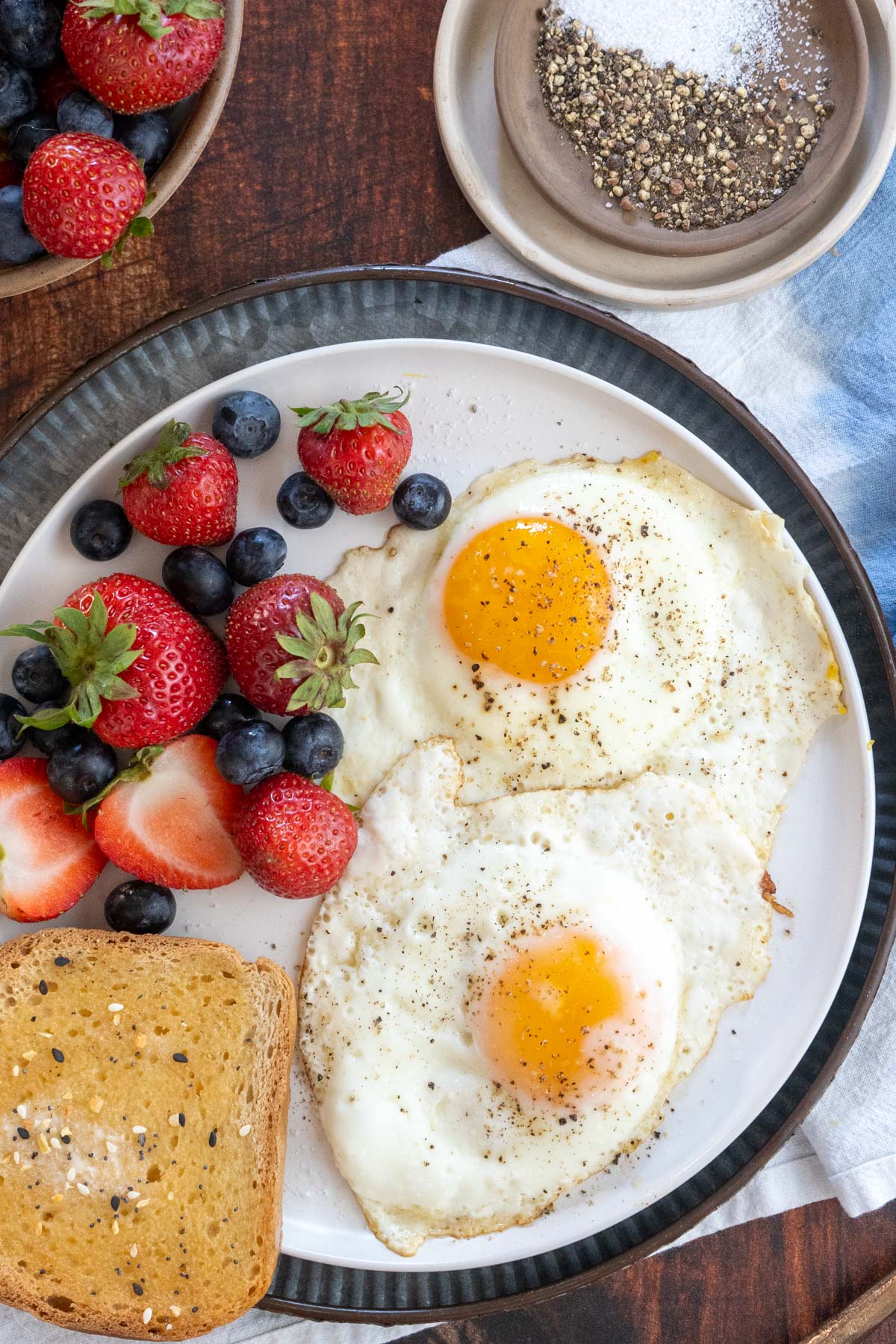
This post may include affiliate links. Please read my disclosure policy.
Every home cook needs to learn how to fry an egg. For some reason, cooking eggs is often seen as intimidating. And now and then you will break a yolk or get a little eggshell in the pan.
But I promise, the perfectly cooked fried egg is within your reach!
Jump to:
What is the Best Pan to Fry Eggs?
The best pan for frying eggs is a nonstick skillet. I like this for beginner cooks because it is easier to flip the egg without tearing it.
You can also use a well-seasoned griddle or cast-iron skillet. Especially great if you just made bacon in it!
A stainless steel pan is my least favorite pan to make fried eggs. You need significantly more oil to prevent the eggs from sticking.
Bacon Fat, Oil, or Butter for Frying Eggs?
Butter is the best choice for frying eggs. As the butter heats up, it will brown a little bit. This adds a nice nutty, toasted flavor to the eggs. The butter also helps the egg whites become soft and tender.
Olive oil or avocado oil are good options if you want the egg whites to be extra crispy.
The oils are plant-based, so they are good choices for people who don't eat dairy. You can also use vegan butter if you want a dairy-free option.
Bacon grease can be used to fry eggs too. It adds a smoky bacon taste to the eggs.
But the flavor can sometimes be too strong, so I only use bacon grease when it will match the other foods I'm eating.
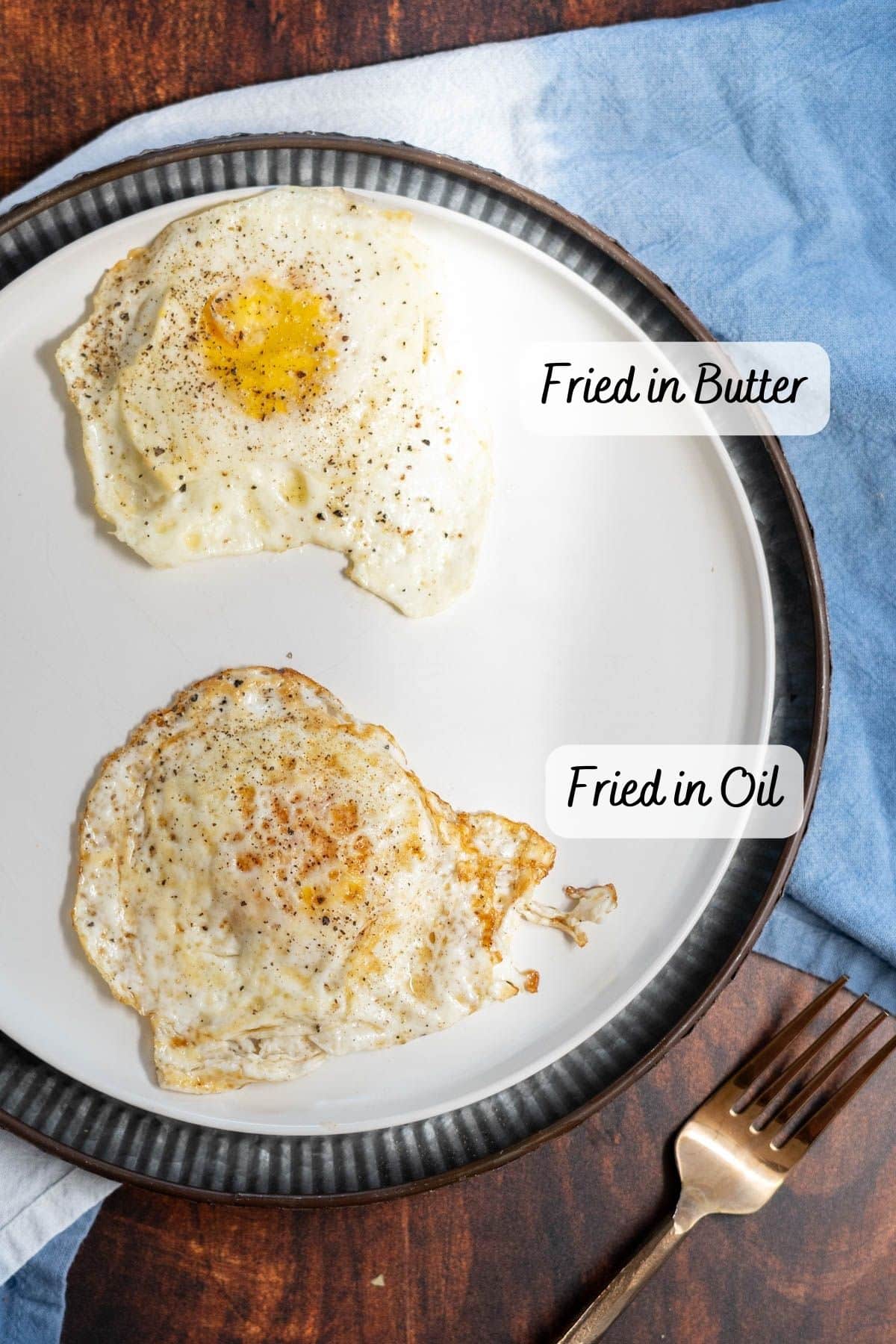
What are the Types of Fried Eggs?
There are 4 types of fried eggs that range in doneness from barely set egg whites and runny yolks to a hard yolk with crispy edges.
Sunny-Side Up Eggs- A runny yolk and the egg whites are just set. Also called runny eggs, this style of egg isn't flipped and is perfect for dipping toast or homemade biscuits.
Over-Easy Eggs- A soft yolk that is slightly runny but the egg is gently flipped and fried on both sides.
Over-Medium Eggs- A bright yellow yolk that isn't runny with crisp edges. Try this type of egg on avocado toast
Over-Hard Eggs- A crispy fried egg with a firm yolk that is ideal for making a breakfast sandwich.
The perfectly cooked egg is in fact, a matter of opinion.
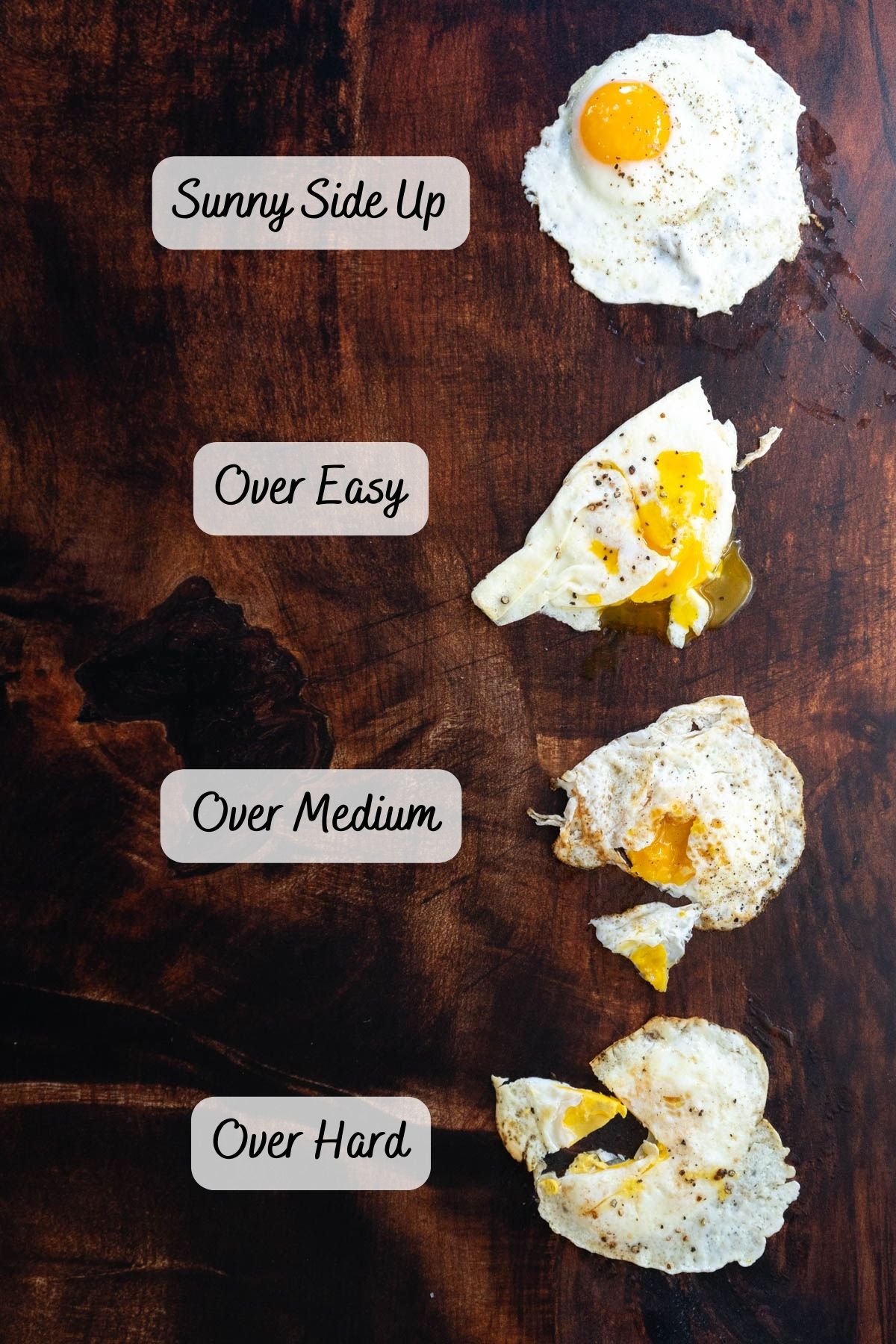
⏲️How to Make Fried Eggs
You want to use Grade AA or Grade A large eggs for frying. Along with this, use the freshest eggs possible. These two factors will give you the most definition around the edge of the yolk.
You can save your older eggs for baking or to make scrambled eggs, quiche, or omelets!
How to Crack an Egg
Hold the egg firmly in one hand. With the other hand, tap the egg gently on a hard, flat surface. Tap the egg in the middle of the wide side.
After tapping, pull the two halves of the shell apart slowly over the pan or bowl you are cracking into. This will allow the egg to slip out while keeping the shell from dropping in.
If a small piece of shell does fall in, use a spoon to gently remove it.
If you want a runny egg I recommend cracking the egg into a small bowl and then tipping the egg into the pan to ensure the yolk doesn't burst.
Heat the Pan
I recommend using a cold pan to begin. Put the pan over medium-low heat. Add plenty of butter right away so it can melt. Using lots of butter will help prevent the eggs from sticking to the pan.
Let the butter melt and heat up. The pan is ready for the eggs when the melted butter starts to get slightly foamy.
Add the egg to the pan. Sprinkle salt and pepper over the top of the egg.
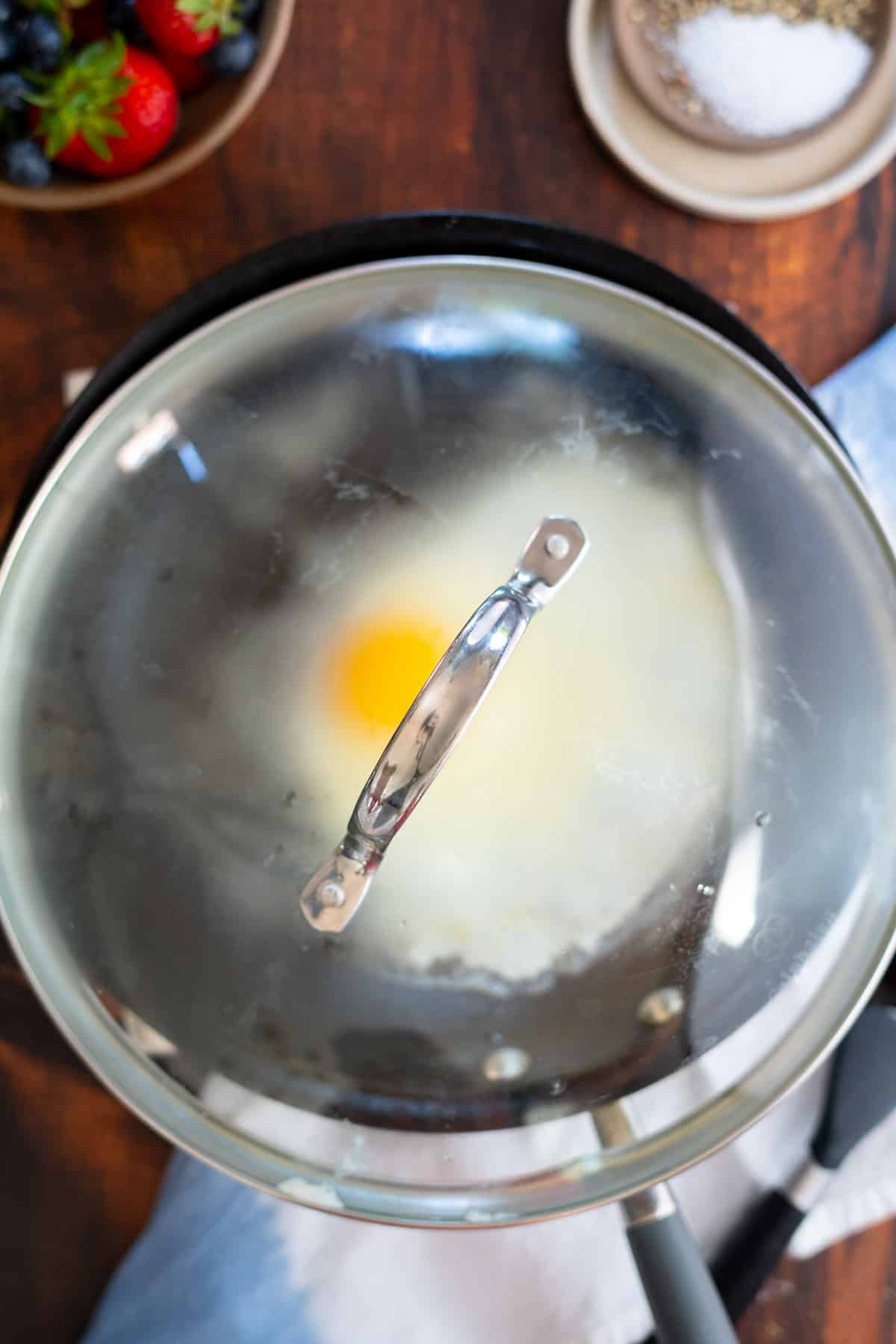
Sunny-Side-Up Eggs
Immediately cover the egg with a lid. The steam will cook the top of the egg while the bottom gets crispy.
Cook for about 2 minutes or until the whites set and look opaque.
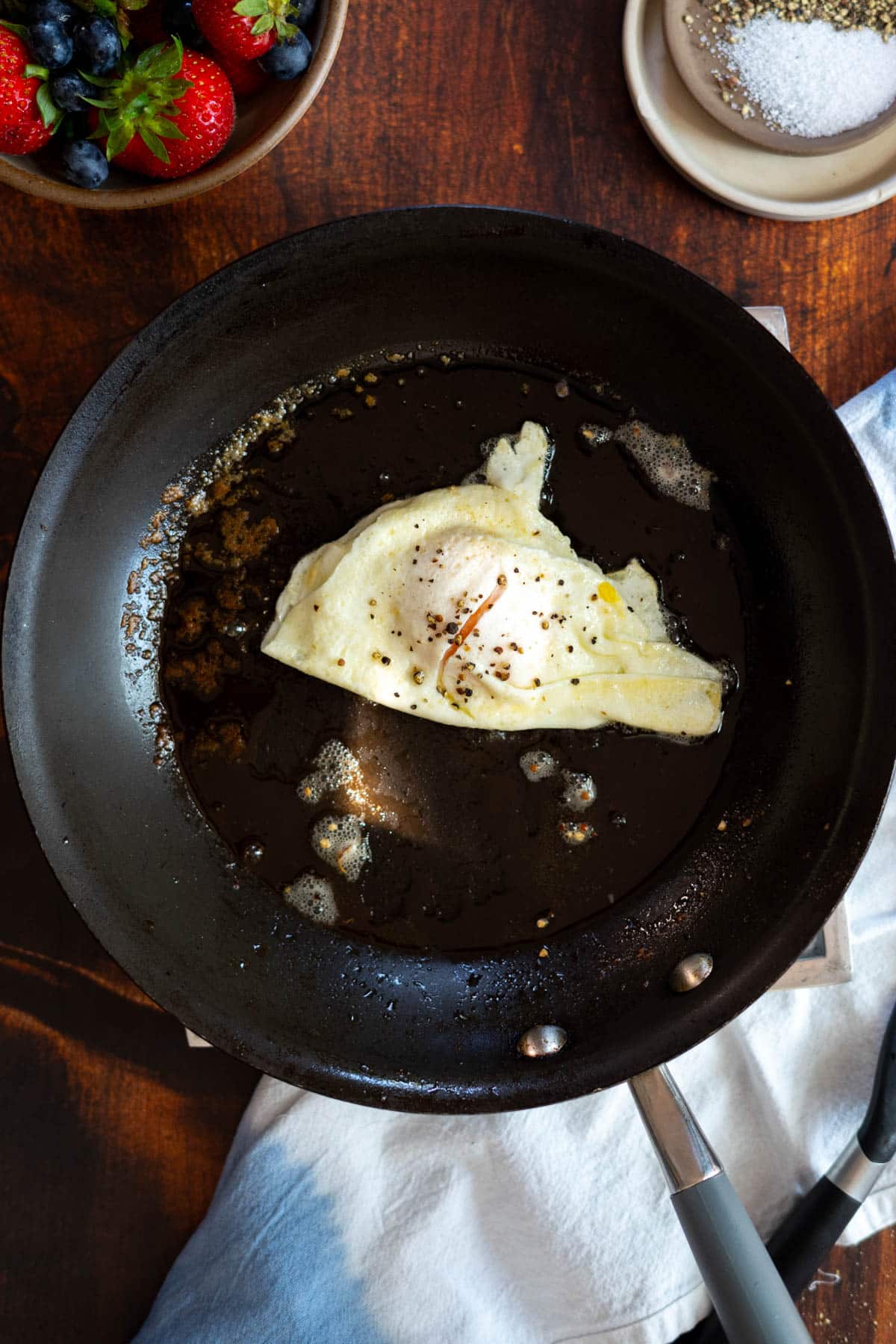
Over-Easy Eggs
Cook for 2 minutes until the edges start to look crispy. Carefully flip each egg using a spatula. Remove the pan from direct heat and let the eggs sit for 1 minute.
The residual heat will cook the top without cooking the yolk further.
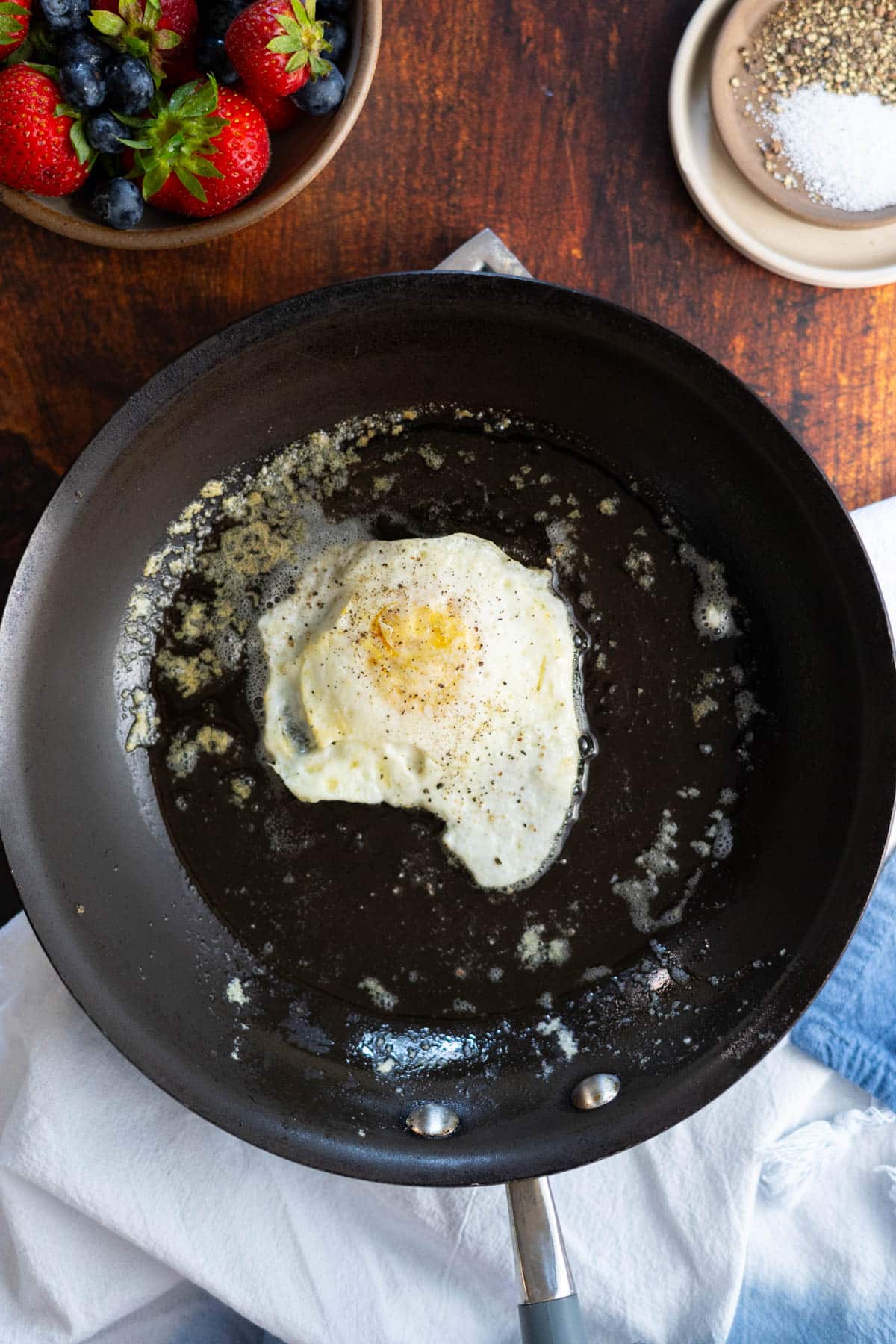
Over-Medium Eggs
Cook for 2 minutes until the edges start to look crispy. Flip the egg. Continue cooking for one more minute. The egg yolk should feel firm if you gently press on it but not broken.
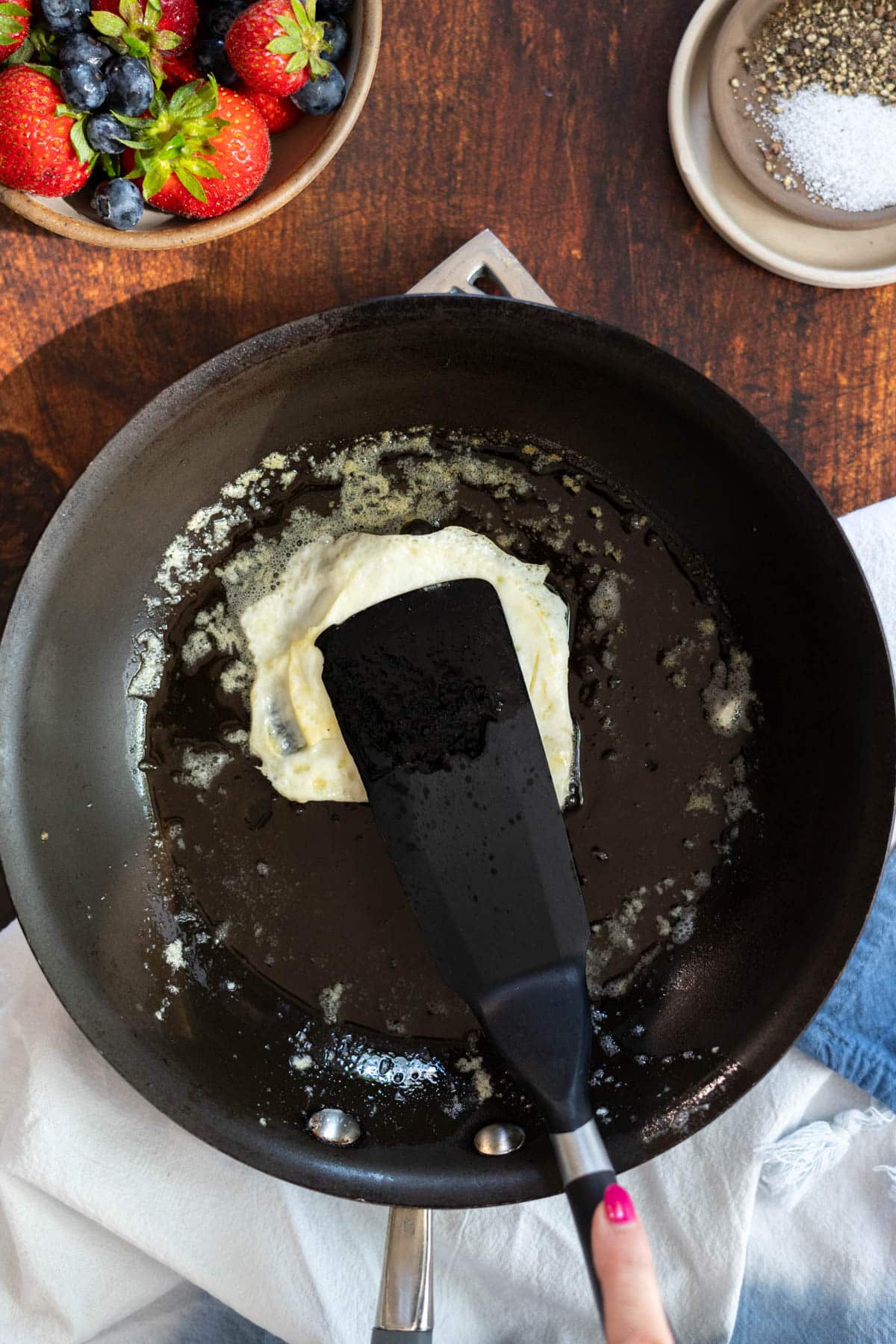
Over-Hard Eggs
Cook for 2 minutes until the edges start to look crispy. Flip and cook for 2 to 3 additional minutes until the egg yolks are firm. Use the spatula to gently press down to ensure the egg yolk has broken and fully cooked through.
Storing and Reheating Fried Eggs
Once the fried eggs are cooled to room temperature, place them in an airtight container. Leftover fried eggs will stay fresh for 3-4 days when stored properly in the fridge.
Reheat leftover fried eggs gently either in the microwave or pan. Be careful not to overcook them. Although the yolks will be more done after reheating.
More Egg Recipes
👩🏻🍳 Expert Tips
- Use fresh eggs.
- For beginners, it's best to start with one egg at a time until you get the hang of flipping.
- Thoroughly heat your pan and melt your butter. A hot pan will keep the egg whites together the prevent the eggs from running together.
- If you are using oil or grease you can test for a hot pan by flicking a TINY amount of water and seeing if it sizzles.
- To avoid breaking the yolk, crack the eggs into a small dish and then slide them into the pan.
- If you are using salted butter skip salting the eggs.
- Do not go above medium heat or your eggs will burn.
- Don't be afraid to play with the seasoning! Sprinkle some salt, pepper, or your favorite herbs for added flavor. I like a cajun seasoning for a little spice.
- A firm yolk will be lighter in color while a runny yolk will be brighter.
- Over medium and hard eggs are the best for meal prep.
Did You Enjoy Making This Recipe? Please rate this recipe with ⭐⭐⭐⭐⭐ or leave a comment. It helps other wonderful people connect with my food.
📖 Recipe Card
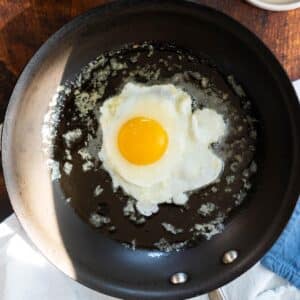
How to Fry an Egg (4 Ways!)
Ingredients
- 1 Tablespoon unsalted butter or other cooking oil or bacon grease
- 2 eggs
- kosher salt
- black pepper
Instructions
- Heat a non-stick skillet or frying pan over medium-low heat. Add the butter allow it to melt and coat the surface. Do not skimp and use at least a full tablespoon per batch.1 Tablespoon unsalted butter
- When the butter begins to foam, crack the eggs into the pan. Or crack the eggs into a small bowl and gently tip into your pan. Sprinkle with salt and pepper.2 eggs, kosher salt, black pepper
Sunny Side Up Eggs
- Cover the pan with a lid. Cook for 1 to 2 minutes or until the egg whites start to set and become opaque but the yolk is still runny. Gently move the egg to a plate and serve.
Over Easy Eggs
- Cook for 2 minutes or until the egg whites start to set and become opaque but the yolk is still runny. The edges may start to look crispy.
- Carefully flip each egg using a spatula. Remove the pan from direct heat and let the eggs sit for 1 minute. Serve immediately.
Over Medium Eggs
- Cook for 2 minutes or until the egg whites start to set and become opaque but the yolk is still runny.
- Once the whites are set and the edges begin to crisp, carefully flip each egg using a spatula. Cook for 2 additional minutes until the egg yolks are firm to the touch but not broken.
Over Hard Eggs
- Cook for 2 minutes or until the egg whites start to set and become opaque but the yolk is still runny.
- Once the whites are set and the edges begin to crisp, carefully flip each egg using a spatula. Cook for 2 to 3 additional minutes until the egg yolks are firm. Use the spatula to gently press down to ensure the egg yolk has broken and fully cooked through.
Notes
- Crack the eggs into a small bowl or ramekin and gently pour into the hot pan to avoid getting eggshells in the pan.
- Leftover cooked eggs should be stored in an airtight container in the refrigerator for 3 to 4 days. Reheat in a frying pan or microwave.
Equipment
- non-stick pan or cast iron skillet
- Plastic spatula

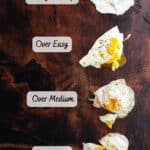
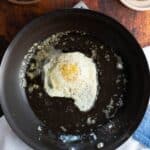

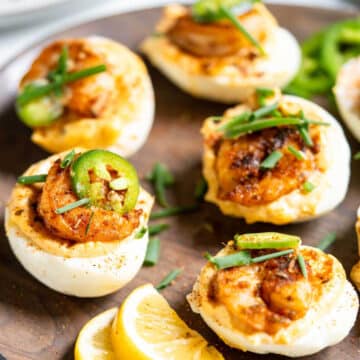

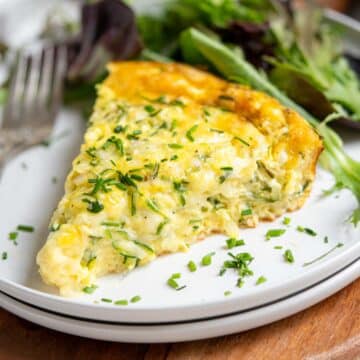
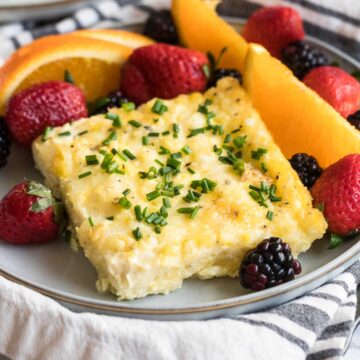
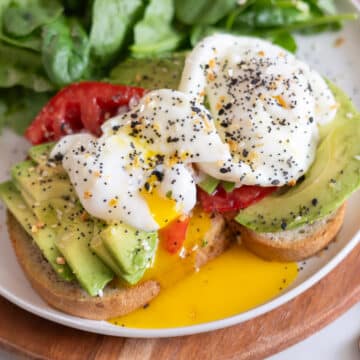
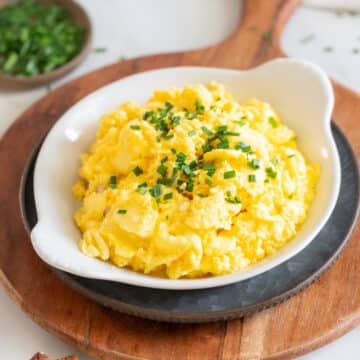
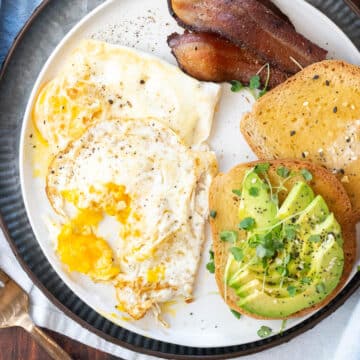
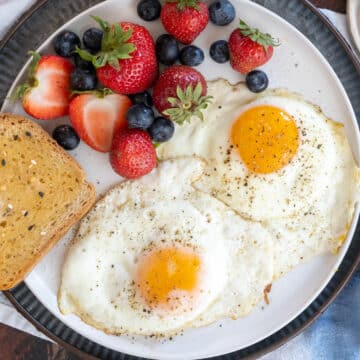
Comments
No Comments